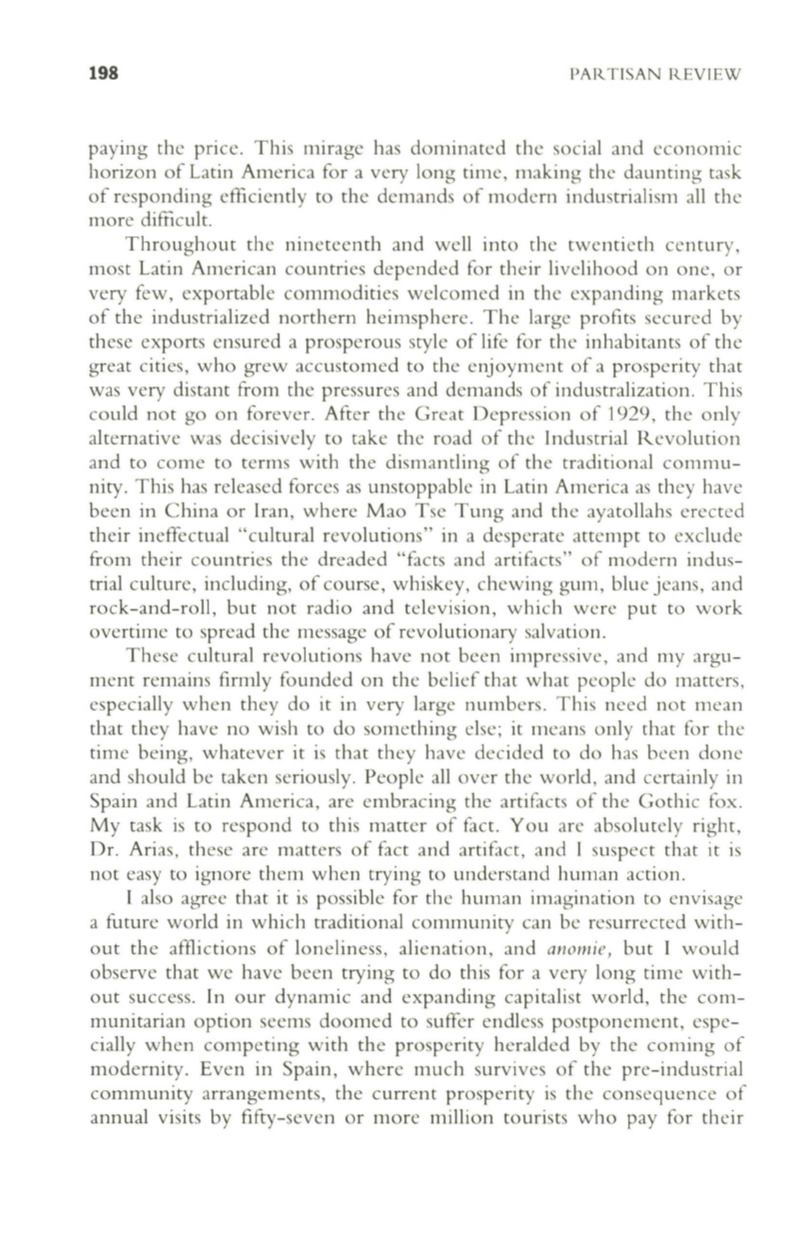
198
PAR.TISAN R.EVIEW
paying the price. This mirage has dominated the social and economic
horizon of Latin America for a very long time, making the daunting task
of responding efficiently
to
the demands of modern industrialism all the
more difficult.
Throughout the nineteenth and well into the twentieth century,
most Latin American countries depended for their livelihood on one , or
very few, exportable commodities welcomed in the expanding markets
of the industrialized northern heimsphere. The large profits secured by
these exports ensured a prosperous style of life for the inhabitants of the
great cities, who grew accustomed to the enjoyment of a prosperity that
was very distant from the pressures and demands of industralization. This
could not go on forever. After the Great Depression of 1929, the only
alternative was decisively to take the road of the Industrial Revolution
and to come to terms with the dismantling of the traditional commu–
nity. This has released forces as unstoppable in Latin America as they have
been in China or Iran, where Mao Tse Tung and the ayatollahs erected
their ineffectual "cultural revolutions" in a desperate attempt to exclude
from their countries the dreaded "facts and artifacts" of modern indus–
trial culture, including, of course, whiskey, chewing gum, blue jeans, and
rock-and-roll, but not radio and television, which were put to work
overtime to spread the message of revolutionary salvation.
These cultural revolutions have not been impressive, and my argu–
ment remains firmly founded on the belief that what people do matters,
especially when they do it in very large numbers. This need not mean
that they have no wish
to
do something else; it means only that for the
time being, whatever it is that they have decided to do has been done
and should be taken seriously. People all over the world, and certainly in
Spain and Latin America, are embracing the artifacts of the Gothic fox.
My task is
to
respond to this matter of fact. You are absolutely right,
Dr. Arias, these are matters of fact and artifact, and I suspect that it is
not easy to ignore them when trying to understand human action.
I also agree that it is possible for the human imagination to envisage
a future world in which traditional community can be resurrected with–
out the afflictions of loneliness, alienation, and
anomie,
but I would
observe that we have been trying to do this for a very long time with–
out success.
In
our dynamic and expanding capitalist world, the com–
munitarian option seems doomed to suffer endless postponement, espe–
cially when competing with the prosperity heralded by the coming of
modernity. Even in Spain, where much survives of the pre-industrial
community arrangements, the current prosperity is the consequence of
annual visits by fifty-seven or more million tourists who pay for their


